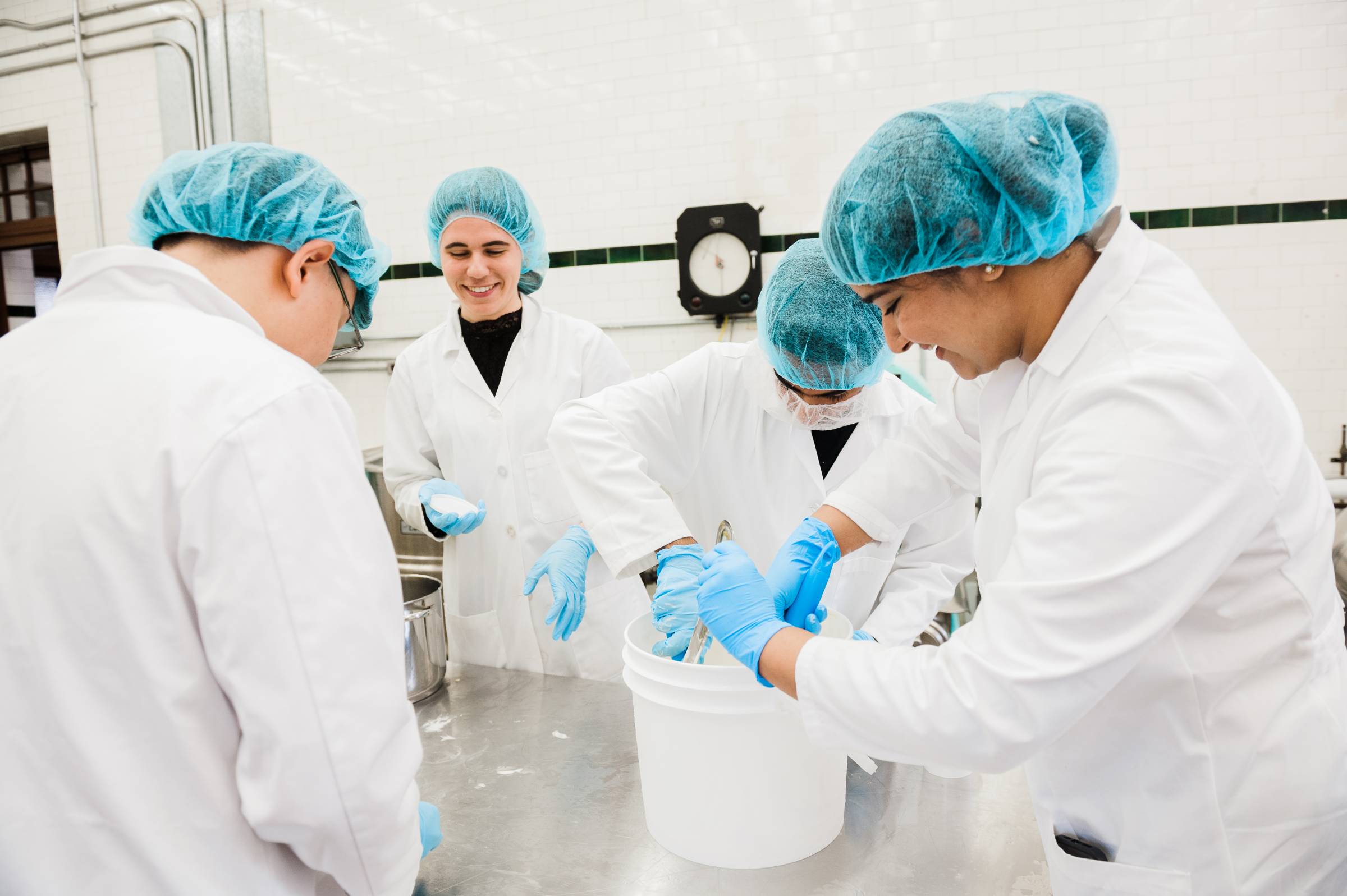
What Makes the Perfect Ice Cream?
To answer this pressing question, we visited UM’s dairy sciences pilot plant, where many Manitoba start-ups go to develop new and improved versions of the timeless frozen treat.
On the Fort Garry campus, technicians work with small to medium-sized companies in the province and Canada-wide, producing a handful of new dairy items every year, cheeses and ice creams included. It’s the only small-scale dairy product plant in the country that’s licensed by the Canadian Food Inspection Agency, allowing for small batches to experiment with new flavours.
Most recently, it’s where Winnipeg’s Bridge Drive-In developed their lupin ice cream, made with the ancient bean now emerging as a popular plant-based option for vegan soft-serve.
“The most unusual flavour I’ve seen is probably one made with marine algae oil, high in omegas,” says research technician Denise Aminot-Gilchrist [BSc(FS)/99, MSc/03].
The UM grad offered insight into the science behind ice cream—along with five tips to help you be more discerning about what goes into your cone.
1. The texture or “body” should be a high level of creamy, she says. Did you know one of ice cream’s main ingredients is air bubbles? Air helps to keep it soft enough to scoop. The more premium the ice cream, the less air and the more creamy. “The cheaper ones will add more air. The air can be up to 50 per cent of the ice cream or more.”
2. A quality ice cream melts in your mouth—but not too quickly. “We do melt tests. The ice creams that don’t melt, those typically have really high stabilizers in them. What you want is to have a nice, even melt.”And when it’s not in the freezer, you want it to melt in a reasonable amount of time. “There are some that I have left on my desk in the lab and I come back four days later and they’re still solid.”
3. The best ice creams have ingredients that are high quality and natural, from the milk to the cream to the stabilizers (the latter keeps ice cream from forming ice crystals; traditionally, eggs are best.)
4. The colour should be predictable—not surprising. A strawberry ice cream shouldn’t look like vanilla. “It should correlate.”
5. The flavour should be distinct, not vague. “You should have a nice, clean flavour. There should be no off flavours. Quality control is key.”
Enjoy!

Until the 1980s, this plant was where all dairy products were developed for the UM community. It’s still home to UM’s Dairy Club, made up of students from various disciplines who produce and sell their ice cream on campus // Photo by Katie Chalmers-Brooks






